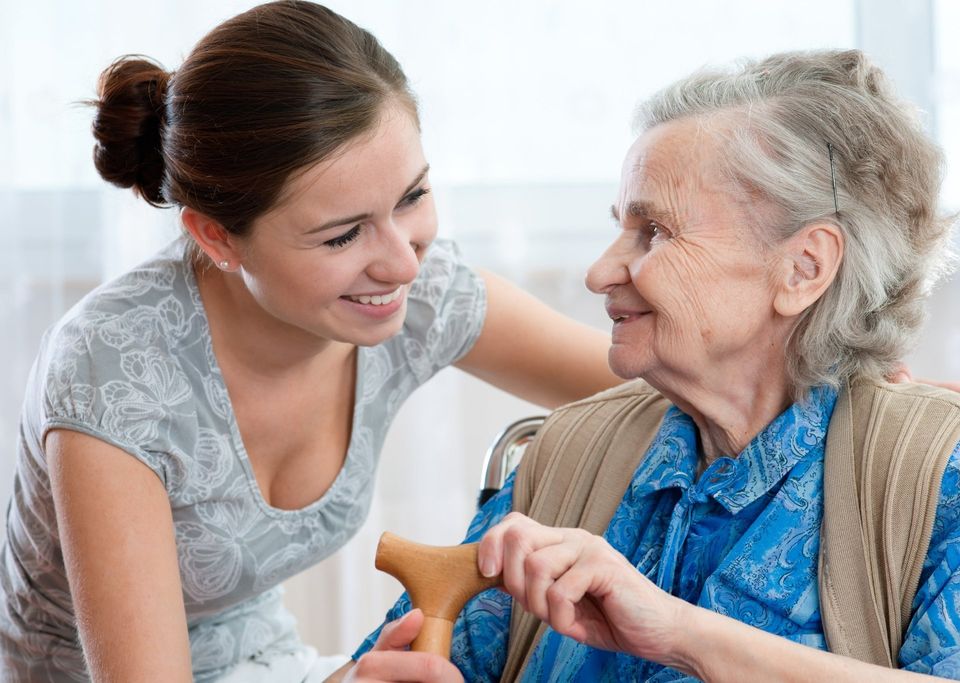SENIORS AND TECHNOLOGY
Technology for Seniors

Seniors and Technology: How to Keep Your Independence
Technology can be a useful aid in helping seniors with various tasks so that they can remain independent and at home.
Technology can be a useful aid in helping seniors with various tasks so that they can remain independent and at home. Stereotypes often portray older adults as fearful or leery of using technology, but more and more seniors are using devices to help them do everyday tasks, set reminders and get transportation. Technology can help many seniors live independently, with devices that can monitor medication management, locate a lost Alzheimer’s patient or sense when someone has fallen.
Many seniors want to maintain their independence for as long as possible. In fact, Americans over age 50 prefer to age in place, according to surveys. (www.nbcnews.com)
Here are five different devices that can help seniors maintain their independence.
1- Tablets and e-readers
Many seniors are using tablets now instead of computers. Handheld tablets are easier to get to and hold on the couch or in a chair. They also have bigger screens for reading, video conferencing, checking email, sharing photos and surfing the Internet. E-readers allow people to make the text larger so it’s easier on the senior’s eyes to read.
Tablets also have a plethora of apps that can be helpful, including ones that let individuals send blood pressure results to healthcare teams, jot notes down and stay connected with friends and family.
Role of the caregiver:
Caregivers can help download new books, set up type size, store contacts, download new apps and show seniors how to use tablets and e-readers so seniors adjustment and learning curve is small.
2- Fitness Trackers
Wearable fitness trackers such as Fitbit or Garmin make it easy for seniors to track their movement and sleep activity throughout the day and night. After the initial setup, adults just wear the devices and can see how many steps they’ve taken throughout the day as well as how many hours they are sleeping each night. Knowing how active they are can help motivate them to exercise more and reach their desired goals.
Role of the caregiver:
Activity can be uploaded to a group and seen by the caregiver to monitor movement. Caregivers can help set goals and start challenges for the senior to see who can get more steps in a day. Making it a fun game or friendly competition can be motivating for some individuals.
3- Medication Monitors
According to Andrew Carle, founding director of the Program in Senior Housing Administration at George Mason University, medication errors are the leading cause of hospitalizations in people over age 75. Medication monitors remind users when and how to take their medications. They then repeat the alert if the medication isn’t taken within a specified time and will also call a caregiver if too much time passes.
Some monitors are combined with medical alert systems that use cell phone technology and contact first the senior, then a friend or family member who has been programmed, and then emergency response. (www.fasterhouse.com)
Role of the caregiver:
Caregivers can be programmed to receive alerts when seniors take their medications. Having the caregiver monitor this remotely allows them to still care for the patient but reduces the time the caregiver needs to be on-site.
4- Ride-sharing apps
Transportation limitations can greatly impact older adult’s independence and self-confidence. Ride-sharing services such as Lyft or Uber make it easy and convenient for seniors to get transportation. These apps are stored on a smartphone or tablet and can be utilized to request a ride in minutes, giving seniors independence and the freedom to get to and from where they want to go. Rides are paid for via a credit or debit card linked to your account and information is sent with the driver’s name, photo, and car make and model. Lyft has also made it where seniors don’t even need a smartphone or tablet to request a ride. (www.lyft.com)
Role of the caregiver:
Caregivers can help with the initial app setup including setting location and linking card information. They can also request rides for seniors, depending on the adult’s technical abilities. Rides can even be arranged remotely.
5- GPS insoles
The GPS SmartSole (www.gpssmartsole.com) is a newer product that inserts into shoes and can locate the person wearing them. Since it fits into the shoe like an insole, it is discreet and perfect for the person who doesn’t want to wear technology on their arm or person. Placing these insoles into the shoes of an individual who has Alzheimer’s or dementia will help track them if they happen to wander. Perimeters can be set and notifications sent it the person leaves a specified area.
Role of the caregiver:
Caregivers can set up the insoles and set the perimeter. They can also monitor senior’s location via GPS and receive notifications if the senior leaves the specified perimeter.
Home Care Tip:
Monitoring an older adult remotely using the different technology can help keep them safe while reducing the number of hours caregivers need to be in the patient’s home.





